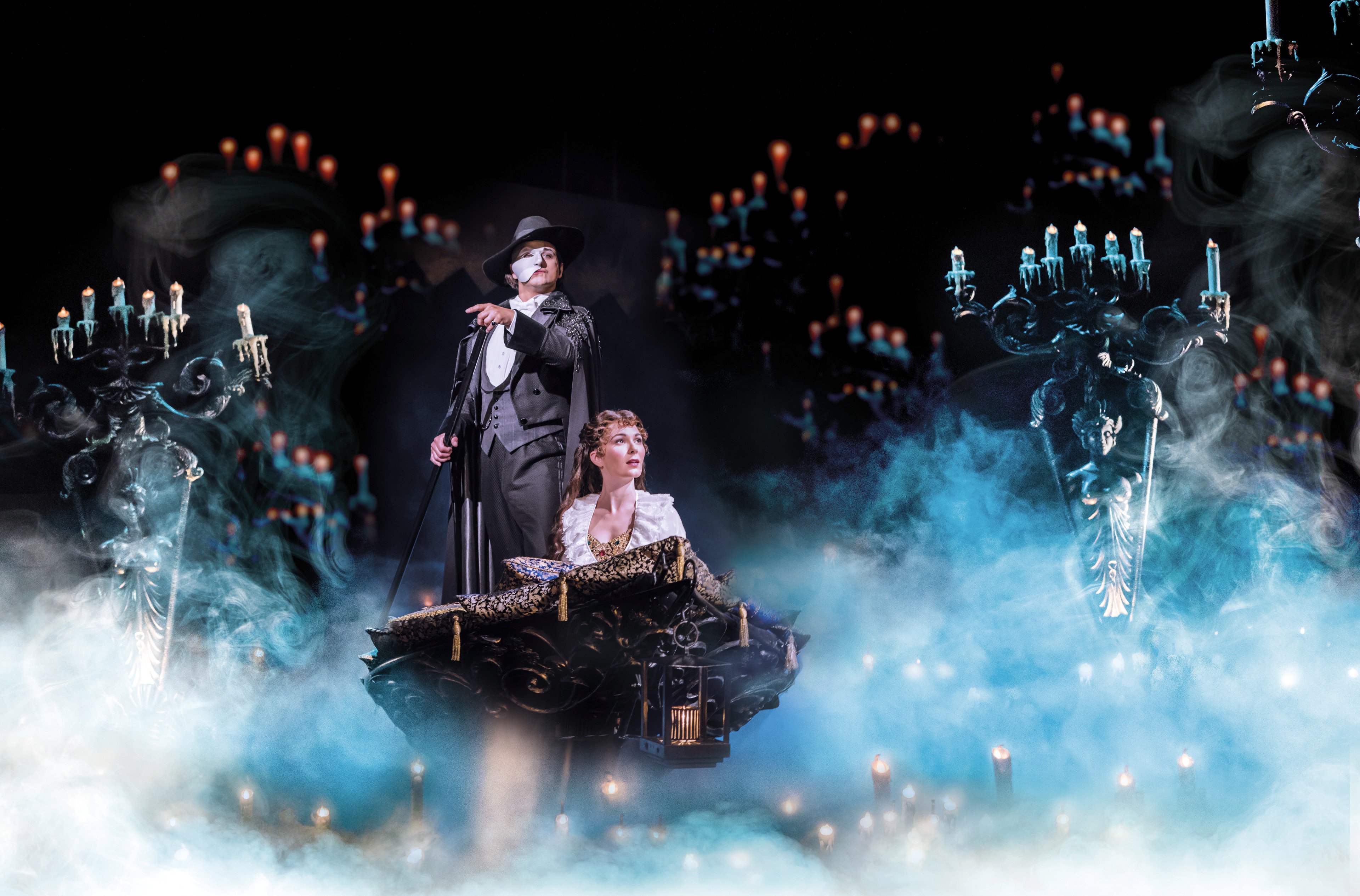Phantom of the Opera has been running now for 35 years in the same, historic Majestic Theatre in New York City. Its sets remain ever so breathtaking—a chandelier that is lifted dramatically above the audiences heads, a moving ramp that leads into an eerie lair. With a box office revenue that is higher than any other film or stage show, the Phantom remains a treasured experience for those who have had the pleasure of witnessing its beauty.
The show begins in a rundown Opera House, an auction of forgotten objects takes place. The last Lot to be announced in the auction is Lot 666— an extravagant chandelier. As soon as it is announced, the theme of the musical is triumphantly played as the chandelier is rushed over those in the orchestra inches away from their heads to hang above. One can feel the wind from its motion. To witness this, I must say is insane. Chills run up your arms as you are rushed back in time to when the Opera House was in the midst of its glory days and a phantom haunted the rafters.
We have the famous composer, Andrew Lloyd Weber, to thank for this simply chilling score. Many of Weber ‘s musicals have run for decades and he has achieved the highly desired EGOT status. This means he has won Emmy, Grammy, Oscar, and Tony Awards! It is said that he crafted Phantom in a tribute to Sarah Brightman, the original female lead. A muse of his own, a beautiful singer who he could not have. The two ended up having an affair and getting married. How’s that for some broadway drama.
Listen here to the organ-filled 80s rock sounding overture (I still get chills whenever I listen):
https://www.youtube.com/watch?v=G9vo_q40Gqg
As the story unfolds, the chandelier is hung, decorated with 600 jewels and lit up with elegance. Tarps uncover a wonderful Opera House filled with color and gold. A young and aspiring chorus girl is introduced, Christine Daee— the object of the Phantom’s obsession and intense infatuation. He is mentoring her, for he wants her to be the star of the opera. As a result of his obsession with Christine, strange and deadly “accidents” start to occur more and more frequently, until finally by demand of the phantom Christine becomes the lead.
It is said that the show mirrors Andrews fascination with Sarah Brightman. An older, expert on music, just as the Phantom himself, mentoring a young aspiring gorgeous singer. And a secret affair that shook up the community.
The Phantom’s lives beneath the Opera House in the subterranean “lake”. The water below the Paris opera house inspired the Phantom of the Opera’s lair. Beneath the Paris Opera House, there is a water tank, and some say that once a man lived there who had no face…
Many believe the story to be true, as there are some historical truths. For instance, the infamous chandelier discussed before, is cut loose by the Phantom in the play. This was inspired by an actual incident from 1896. That year, a counterweight used to hold up a chandelier fell through the roof of the Paris Opera House and it killed someone when it fell.
We may never know if the Phantom of the Opera was real…but what we do know is this broadway show is one of the greats. Maybe one day you’ll visit the Paris Opera House yourself to see if the Phantom truly exists.
Sarah Brightman and Michael Crawford in 1988: The original Phantom and Christine.



I really like the way you set up this blog post with the video in the middle of it and pictures to go with what you’re talking about. Having those outside sources makes it more interesting to me because I wouldn’t have to go look for it on my own. I think the way you wrote this was great too and I loved how you expressed how much you love this musical with details like lot 666 gets sold and you talk about the chills you feel when you’re watching it in person. I think things like that really elevate this post because it reflects how passionate you are about this musical.
I’ve always known a lot about the play the Phantom of the Opera but not much about its backstory! For example, it is so cool to know that the classic chandelier scene was inspired from an actual situation. I think that understanding the background can help give you perspective about the actual play. You seem to know a lot about what you are talking about and do a great job explaining your points! It makes me excited to learn about more plays like this one!
Hi Ruby, I’m Laura from your blog group. I’ve never been very into Broadway myself, but Phantom of the Opera is such a famous play that has had a lot of cultural influence, so hearing about the history behind it was very interesting. It made me want to visit the Paris Opera House so I could see for myself whether it really is/was haunted. I look forward to hearing more about plays in your future posts 🙂